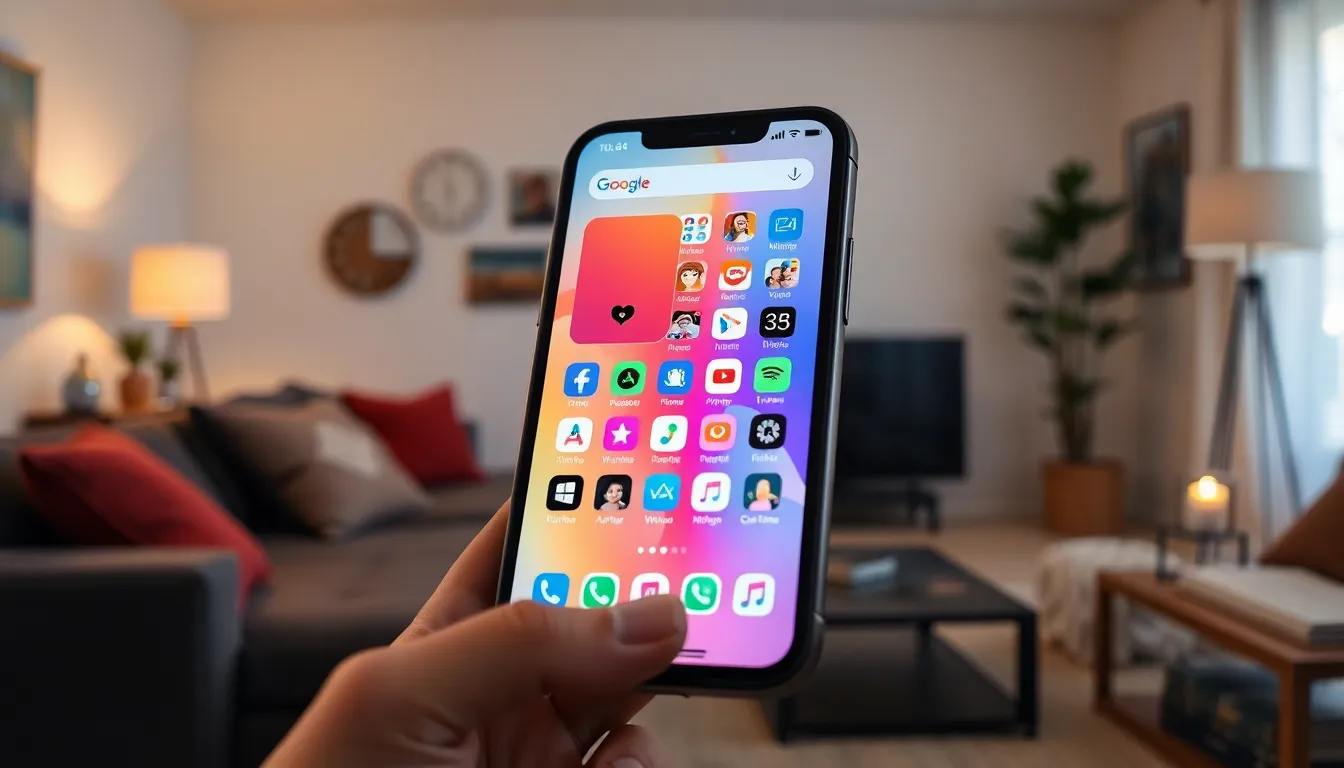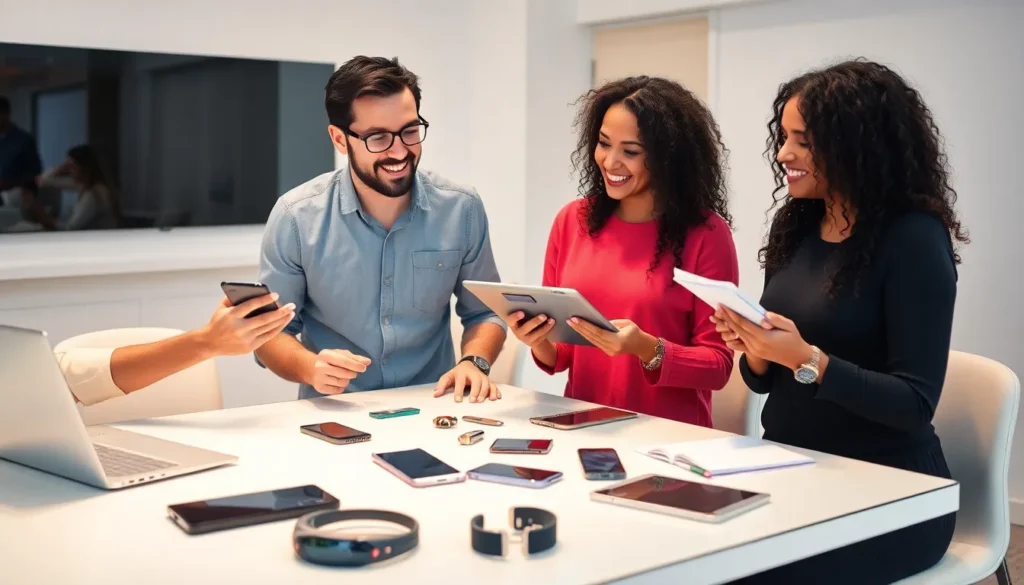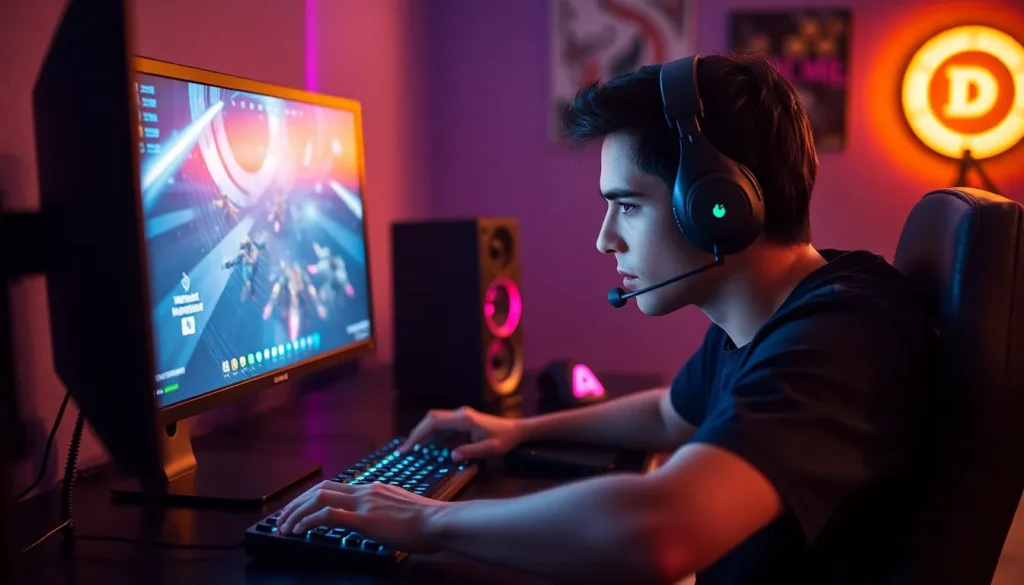Table of Contents
ToggleIn a world where everyone seems to have the same smartphone, why not stand out from the crowd? Customizing your smartphone’s UI is like giving your device a stylish makeover. It’s not just about aesthetics; it’s about creating a personal experience that reflects your unique personality. Imagine swiping through a home screen that feels like an extension of yourself, rather than a generic template designed for the masses.
Overview of Smartphone UI Customization
Smartphone UI customization plays a vital role in enhancing user experience. An array of options exists, empowering users to modify their devices significantly. Icons, themes, and layouts represent just a few elements users can adjust to achieve a desired look and feel.
Customization extends beyond visual elements. Users can rearrange app placements to prioritize frequently used applications. Widgets provide additional functionality, enabling quick access to key information directly from the home screen.
Different operating systems offer specific customization features. Android allows extensive modifications through launchers, while iOS offers a more restricted environment yet still permits some changes, such as widget placement. Many apps further enhance customization through themes and icon packs, allowing users to align their device with personal taste.
User preferences dictate customization choices. Some users prefer minimalism, selecting simple designs that reduce clutter. Others opt for vibrant themes bursting with color and creativity. The combination of these choices results in a unique UI experience tailored to individual needs and preferences.
Numerous benefits stem from Smartphone UI customization. It fosters creativity, making each smartphone feel distinctly personal. This personalization can lead to increased satisfaction and engagement. A thoughtful design can lead to a more efficient workflow, reducing the time spent navigating through applications.
Smartphone UI customization transforms a standard device into a personalized, vibrant digital environment that reflects user individuality. Each adjustment contributes to a distinct and engaging user experience.
Benefits of Customizing Smartphone UI

Customizing smartphone UI offers various significant advantages that enhance the overall user experience. Personalizing a device creates a unique environment tailored to individual preferences.
Increased Personalization
Personalization transforms a generic smartphone into a reflection of the user’s personality. Unique themes and color palettes allow individuals to express themselves visually. Adjusting icon styles and layouts further helps create a cohesive aesthetic. Users can even opt for custom wallpapers that evoke specific moods or memories. Fostering a sense of ownership boosts emotional attachment to the device. Ultimately, personalization makes the smartphone feel like an extension of oneself.
Enhanced Usability
Usability improves substantially with smartphone UI customization. Users can rearrange app placements for optimal access to frequently used applications. Incorporating widgets provides quick information without navigating through multiple screens. Personalized shortcuts streamline workflow and reduce navigation time. Enhanced organization leads to increased productivity, as users spend less time searching for tools. Customizing the interface enables a tailored interaction that supports individual habits and preferences.
Popular Methods to Customize Smartphone UI
Customizing a smartphone UI involves various methods that significantly enhance personalization. Users explore a range of options to create a more tailored experience.
Using Third-Party Launchers
Third-party launchers provide extensive customization features. These apps allow users to change app icons, grid layouts, and animations. Popular choices include Nova Launcher and Microsoft Launcher, each offering unique settings. Users can usually adjust settings without rooting their devices. Flexibility in creating custom themes enhances the visual appeal of home screens. Additionally, these launchers often include features not available in standard launchers, such as gesture controls and scrolling effects.
Widgets and Themes
Widgets add functionality and aesthetic appeal to home screens. They offer quick access to apps and information, like weather updates and calendar events. Users can choose from various widget sizes and styles, allowing for a highly personalized interface. Themes also play a crucial role in smartphone customization. Many operating systems provide built-in theme stores, while others allow downloads from third-party sources. Integrating cohesive color palettes and designs creates a unified look. Dynamic themes change based on time or location, further enhancing engagement.
Tips for Effective Smartphone UI Customization
Smartphone UI customization enhances both aesthetics and functionality. Users can achieve a unique digital environment by carefully selecting elements that reflect their personality and needs.
Balancing Aesthetics and Functionality
Creating a visually appealing UI involves selecting colors, icons, and themes that resonate. Users often choose vibrant themes or minimalistic designs based on personal preference. Functionality remains crucial; users should prioritize easy navigation alongside appealing visuals. By using custom widgets, individuals can maintain their aesthetic choices while enhancing usability. For instance, placing frequently used apps within reach maximizes efficiency. A cohesive theme across app icons and backgrounds can elevate the overall experience. Finding the right balance ultimately leads to a personalized interface that feels intuitive and uniquely tailored.
Keeping it User-Friendly
User-friendliness significantly impacts the overall satisfaction with a smartphone. Simple layouts contribute to seamless navigation and reduce frustration. Organizing apps into folders by category streamlines access and improves efficiency. Moreover, adjusting the size of icons and text makes a noticeable difference for readability. Customizable widgets offer crucial information at a glance without overwhelming the screen. Choosing user-friendly navigation aids benefits everyone, particularly those who may not be tech-savvy. By ensuring that customization prioritizes ease of use, individuals can enjoy enhanced interaction with their devices.
Customizing a smartphone’s UI is more than just a trend; it’s a pathway to self-expression. By tailoring the interface to individual preferences, users can create an environment that feels uniquely theirs. This personalization not only enhances aesthetic appeal but also improves functionality and usability.
Embracing various customization options can lead to a more engaging and efficient experience. Whether through third-party launchers, dynamic themes, or thoughtfully arranged widgets, the possibilities are endless. Ultimately, a customized UI transforms a standard device into a true reflection of the user’s personality and lifestyle, making every interaction more enjoyable and meaningful.







